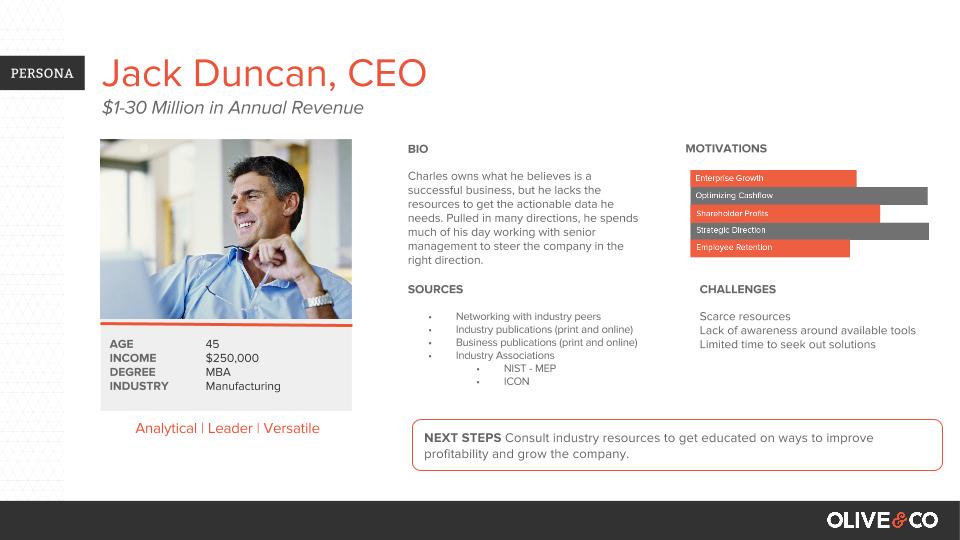Personalization has become a crucial component of modern B2B marketing. In fact, 94% of brand managers across multiple industries believe that it plays an “extremely important” role in their efforts to increase revenue and meet marketing objectives.
There are a lot of different ways a business can—and should—use personalization in digital marketing ecosystems, but we’re going to start with websites because we see them as the focal point for brands, especially in the B2B space where brand experience is defined by website experience. And, while many businesses have been using personalization in email marketing and digital advertising for some time now, most B2B businesses have struggled to implement effective personalization on their websites.
Before we get started, let’s define what we mean by “website personalization.”
What Is Website Personalization?
Website personalization is the practice of creating a dynamic, custom-made experience for website visitors. From the second users land on a homepage or other key landing pages, the site’s content, architecture, and offers are tailored to their specific needs and interests.
Why is this so important?:
- 87% of consumers say personally relevant branded content positively influences how they feel about a brand.
- 74% of customers feel frustrated when website content is not personalized.
- 93% of companies see an increase in conversion rates as a result of website personalization.

How Does It Apply to B2B Websites, Specifically?
It’s true—the “B” in B2B refers to other businesses, but online, they’re represented by an actual person who’s visiting your website and making decisions as a customer. More often than not, these B2B shoppers are expecting a personalized experience, with 72% claiming they count on sites to have a deep understanding of their needs.
By enhancing your audience’s experience, website personalization boosts satisfaction and engagement—leading to longer visits, repeat visits, and ultimately, increased conversions.
Sounds easy, right? Well, for B2B websites, developing a personalized experience is a lot easier said than done. That’s why 54% of marketing professionals believe it’s harder to achieve personalization in B2B compared to B2C.
B2B customers bring a different mix of obligations, priorities, and budget constraints to the table, which makes the simple idea of personalization tricky to implement effectively. Additionally, the B2B sales process usually involves multiple website visits and substantial research—making it longer and more complex. Nonetheless, while it does take some extra work and planning, website personalization, when done correctly, is definitely worth the effort.
How Does Personalization Help B2B Websites?
By enhancing and focusing your audience’s experience, website personalization boosts satisfaction and engagement—leading to longer visits, repeat visits, and ultimately, increased conversions. Put simply, a visitor met with the right content at the right time is more likely to move through your sales funnel and, eventually, become a loyal customer.
After all, users have a goal in mind when they arrive on your site. Helping them achieve that goal through personalization helps them, but it also helps you. This “win/win” improves your brand experience and removes friction from your sales funnel.
What Website Personalization Tools Are Available for B2B Marketers?
There are a lot of tools B2B marketers can use to personalize their websites. They all tout different features, but their core function is to help you deliver relevant, customized content to visitors as they journey through your website. We’re talking every piece of content that lives on your site—from CTAs to pop-ups, offers to headlines, and everything in between.
Website personalization requires research, planning, content creation, data analysis, and a commitment to ongoing website continuous improvement.
HubSpot is one of the most popular tools for B2B marketers—their content management system allows you to tailor content to anonymous visitors based on their location, device, or referral source. If a visitor’s identity is known, HubSpot lets you present personalized content to the visitor based on the criteria you establish in the platform.
If your website is powered by WordPress, LogicHop is a great tool to use for dynamic content personalization. When someone visits your site, LogicHop gathers data about the user and builds a profile. This robust collection of 40+ data points includes details on the visitor’s location, the site pages they’ve viewed, device type, referring site, and the amount of time since their last visit—just to name a few. After the data is collected, LogicHop displays relevant content based on everything it knows about the visitor.
And if you’re a fan of Adobe products, Marketo offers tools for B2B marketers that want to use personalization to support their account-based marketing approach. To personalize website content, it uses firmographic data to segment the businesses who visit your site into useful categories, like size, type of ownership (i.e., private, public, or government), location, and much more. As with the other personalization platforms listed here, Marketo uses this user data to present highly targeted content to your website visitors.
How Should B2Bs Get Started With Website Personalization?
Once you’ve invested in a platform, it’s time to focus on building your personalization strategy. Doing this correctly requires research, planning, content creation, data analysis, and a commitment to ongoing website continuous improvement.
As with most things in digital marketing, it all starts with understanding your audience.
Build Buyer Personas
In order to use website personalization effectively, the first step is to learn everything you can about your audiences. By researching, surveying, and interviewing your past, current, and prospective customers, you can build something we call a buyer persona, or audience persona.
We do a deep dive into using buyer personas on our blog, but basically, they’re detailed profiles of the unique audiences you’re targeting— including a name, job title or role, bio, demographic information, challenges, goals, and preferred information sources.

Create Journey Maps
Once you’ve armed yourself with buyer personas, you’ll have the information you need to start creating a journey map for each persona.
A journey map plots the unique path each persona takes as they move through the different stages of their journey with your brand—from awareness, to consideration, to decision, to advocacy. The entire journey may not happen on the website—and it probably won’t be a simple, linear path—but a user’s experience on your website plays an important role in helping them move from one stage of the buyer journey to the next.
A well-crafted journey map will highlight your persona’s motivations, needs, and pain points at each stage of the buyer journey. These insights can then be mapped to different pages, messages, and offers on your site, serving as the blueprint for your personalization strategy.
Without this blueprint, even the best personalization tools will swing and miss, leading to irrelevant content and disinterested website visitors.
Craft Compelling Content
Now that you know who your audience is and what they want, it’s time to focus on how you’re going to talk to them.
Your personas have different goals, priorities, and decision drivers. The content you create for each of them must align and speak directly to the needs, challenges, and pain points that were revealed through the creation of buyer personas and journey maps. If it doesn’t, your content won’t feel relevant or personalized for your audiences.
Audit Your Data
Website personalization can only be as strong as the data informing it. Meaning, if your contact database and other data sources aren’t managed effectively, your personalization strategy risks doing more harm than good.
Spend time cleaning up your data sources and commit to ongoing maintenance in order to ensure that your personalization strategy succeeds.
Test and Repeat
In order to be an effective digital marketing focal point, your B2B website should rely on data-driven continuous improvement. Your personalization strategy should follow this same approach.
“Set it and forget it” simply won’t work. It’s critical to track the performance of personalization components, analyze available data, test variations, and make appropriate optimizations on an ongoing basis.
Website Personalization Leads to Increased Sales
Equipping your website with personalization is an easy concept to grasp, but it can be complicated to carry out. Luckily, with the right amount of planning and research, it’s affordable and manageable for B2Bs of all sizes—and with personalization resulting in a 20% increase in sales—we’d say it’s more than worth it.




